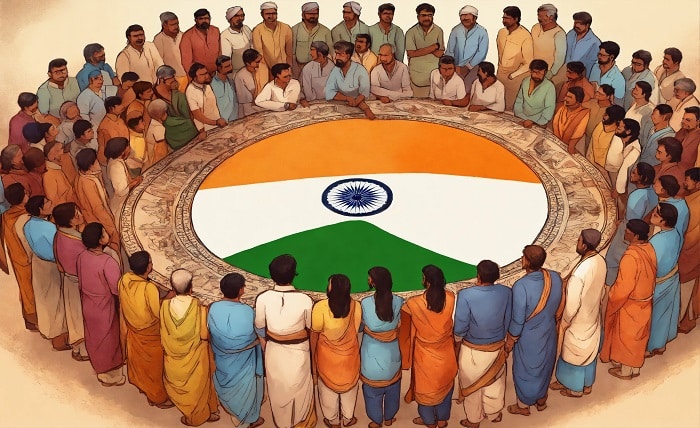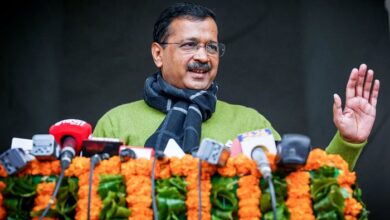
Introduction
India is a nation with a rich cultural heritage and a diverse array of traditions. This diversity extends to its sports, where a variety of games, both modern and traditional, hold a special place in the hearts of millions. The national sports of India, in particular, reflect the country’s unique history and its passion for athletic excellence.
Field Hockey: The Official National Sport
Field hockey is officially recognized as the national sport of India. This sport has a long and illustrious history in the country, marked by numerous achievements on the international stage. India’s love affair with field hockey began in the early 20th century, and it quickly became a symbol of national pride.
Field hockey in India gained international acclaim with the men’s team winning multiple Olympic gold medals from 1928 to 1956. These victories were more than just sporting achievements; they were a testament to India’s skill, strategy, and dominance in the sport. Players like Dhyan Chand, often referred to as the “Wizard of Hockey,” became national heroes.
Despite the rise of other sports, field hockey remains deeply embedded in India’s sporting culture. The sport’s governing bodies, such as Hockey India, continue to work towards reviving its former glory through grassroots development and professional leagues. The Pro Hockey League, for example, has provided a platform for young talent to shine.
The national sports of India, with field hockey at the forefront, showcase the country’s commitment to excellence and its rich sporting history. Efforts to promote the sport in schools and communities aim to rekindle the passion that once made India a hockey powerhouse.
Cricket: The Unofficial National Obsession
While field hockey holds the title of the official national sport, cricket is undoubtedly the unofficial national obsession of India. The sport’s popularity in India is unparalleled, with millions of fans following every match with fervor. The national cricket team enjoys a fan base that rivals any other sport in the world.
Cricket was introduced to India during British colonial rule and quickly took root. The first Indian cricket club was established in 1792, and the sport has grown exponentially since then. The national cricket team’s achievements, such as winning the ICC Cricket World Cup in 1983 and 2011, have further cemented cricket’s place in the national psyche.
The Indian Premier League (IPL) has revolutionized the sport in India, combining cricket with entertainment to create a spectacle that attracts global attention. The IPL has also provided a lucrative career path for aspiring cricketers, making cricket an attractive profession for young athletes.
Cricket, as one of the national sports of India, reflects the country’s ability to blend tradition with modernity. The sport’s ability to unite people across different regions, languages, and cultures is a testament to its universal appeal. Despite not being the official national sport, cricket’s impact on Indian society is profound.
Kabaddi: The Indigenous Sport
Kabaddi is one of the national sports of India that has its roots deeply embedded in the country’s rural landscape. This contact sport is believed to have originated in ancient India and has been played for centuries. It requires strength, strategy, and agility, making it a thrilling and competitive sport.
The Pro Kabaddi League (PKL), launched in 2014, has played a significant role in popularizing kabaddi on a national and international level. The league’s format, similar to that of the IPL, has attracted a large following and brought the sport into the mainstream. Players like Anup Kumar and Pardeep Narwal have become household names.
Kabaddi’s inclusion in major sporting events, such as the Asian Games, has further elevated its status. India’s national kabaddi teams have consistently performed well in these events, bringing home numerous gold medals and reinforcing the sport’s importance in the national sports of India.
The cultural significance of kabaddi cannot be overstated. It is a sport that reflects India’s rural roots and traditional values. The simplicity of the game, combined with its intense physical demands, makes it accessible and exciting for players and spectators alike. Kabaddi continues to thrive in both urban and rural areas, bridging the gap between different segments of society.
Football: The Growing Passion
Football, or soccer, is another sport that has been gaining popularity as one of the national sports of India. While it may not yet rival cricket in terms of fan following, the sport has a dedicated and growing base of supporters. India’s football history dates back to the late 19th century, with the establishment of the Durand Cup in 1888, one of the oldest football tournaments in the world.
The Indian Super League (ISL), launched in 2014, has significantly boosted the sport’s profile. The league has attracted international stars and provided a platform for domestic talent to shine. Clubs like Bengaluru FC and ATK Mohun Bagan have garnered substantial fan bases, contributing to the sport’s growing popularity.
India’s national football team, the Blue Tigers, has also shown promise on the international stage. Although the team has not yet qualified for the FIFA World Cup, their performances in regional tournaments like the SAFF Championship have been commendable. Efforts to improve grassroots development and infrastructure are ongoing, with the aim of making India a competitive footballing nation.
Football’s rise as one of the national sports of India highlights the country’s diverse sporting interests. The sport’s ability to bring people together, regardless of their background, is one of its greatest strengths. As football continues to grow in popularity, it promises to add another chapter to India’s rich sporting legacy.
Badminton: The Rising Star
Badminton has emerged as one of the national sports of India, with a growing number of players achieving international success. The sport’s rise in popularity can be attributed to the stellar performances of players like P.V. Sindhu, Saina Nehwal, and Kidambi Srikanth, who have won numerous accolades on the global stage.
India’s badminton history is rich, with the sport being played at a competitive level since the early 20th century. The Badminton Association of India (BAI) has played a crucial role in promoting the sport and nurturing talent. The establishment of the Premier Badminton League (PBL) has further enhanced the sport’s visibility and popularity.
The achievements of Indian badminton players have inspired a new generation of athletes. P.V. Sindhu’s silver and bronze medals at the Olympics, along with her World Championship title, have made her a role model for aspiring shuttlers. Saina Nehwal’s success has also played a pivotal role in popularizing badminton as one of the national sports of India.
Badminton’s appeal lies in its fast-paced nature and the skill required to excel. The sport is accessible to people of all ages and is played both recreationally and competitively across the country. As India continues to produce world-class badminton players, the sport’s status as one of the national sports of India is further solidified.
Wrestling: A Traditional Powerhouse
Wrestling is one of the oldest and most respected national sports of India. The sport has deep historical roots, with references to wrestling found in ancient texts and scriptures. Wrestling, known as Kushti or Pehlwani in India, has been a part of Indian culture for centuries and remains a popular sport in rural areas.
India’s wrestling prowess has been showcased on the international stage, with wrestlers winning numerous medals at the Olympics, Commonwealth Games, and Asian Games. Legendary wrestlers like Sushil Kumar, Yogeshwar Dutt, and Sakshi Malik have brought glory to the nation with their exceptional performances.
The traditional form of wrestling, practiced in akhadas (wrestling schools), involves rigorous training and a strict regimen. This form of wrestling emphasizes physical strength, technique, and endurance. Modern freestyle wrestling, governed by the Wrestling Federation of India (WFI), has also gained prominence and is widely practiced across the country.
Wrestling’s inclusion in the national sports of India reflects the country’s rich cultural heritage and its commitment to preserving traditional sports. The sport’s popularity has been bolstered by initiatives to promote wrestling at the grassroots level and the success of Indian wrestlers on the global stage. Wrestling continues to inspire young athletes and remains a source of national pride.
Tennis: A Growing Passion
Tennis is another sport that has gained popularity as one of the national sports of India. The sport has a dedicated following, with Indian players making significant strides on the international circuit. India’s tennis history dates back to the early 20th century, with players like Ramanathan Krishnan and Vijay Amritraj achieving success in major tournaments.
In recent years, players like Leander Paes, Mahesh Bhupathi, and Sania Mirza have put Indian tennis on the global map. Leander Paes, in particular, has had an illustrious career, winning multiple Grand Slam titles in doubles and mixed doubles. Sania Mirza’s achievements in women’s doubles have also brought recognition to Indian tennis.
The All India Tennis Association (AITA) has played a crucial role in promoting the sport and organizing tournaments at various levels. The rise of professional tennis leagues, such as the Indian Tennis Premier League (TPL), has provided a platform for young talent to showcase their skills.
Tennis, as one of the national sports of India, appeals to a wide audience due to its dynamic and competitive nature. The sport’s growing popularity is evident in the increasing number of tennis academies and facilities across the country. As more Indian players make their mark on the international stage, tennis is poised to become a significant part of India’s sporting landscape.
Athletics: The Quest for Glory
Athletics is a fundamental component of the national sports of India, encompassing a wide range of events such as running, jumping, and throwing. The country’s athletes have made significant progress in recent years, achieving success in regional and international competitions.
India’s athletics history is marked by notable achievements, such as Milkha Singh’s performances in the 1950s and 1960s. Known as the “Flying Sikh,” Milkha Singh’s legacy continues to inspire young athletes. In recent times, athletes like Neeraj Chopra, who won the gold medal in javelin at the 2020 Tokyo Olympics, have brought glory to the nation.
The Athletics Federation of India (AFI) has been instrumental in promoting the sport and identifying talent at the grassroots level. The introduction of professional leagues and the establishment of training centers have provided a platform for athletes to excel.
Athletics, as one of the national sports of India, highlights the country’s potential in a diverse range of events. The sport’s appeal lies in its inclusivity and the opportunity it provides for athletes to showcase their talent on the world stage. As India continues to invest in athletics infrastructure and training, the nation’s quest for glory in the sport is set to continue.
Boxing: The Rise of Champions
Boxing has emerged as one of the national sports of India, with the country’s pugilists achieving remarkable success on the international stage. The sport’s popularity has grown steadily, thanks to the achievements of boxers like Mary Kom, Vijender Singh, and Amit Panghal.
India’s boxing history is relatively recent, with significant progress made in the last few decades. The establishment of the Boxing Federation of India (BFI) has provided a structured framework for the sport’s development. The introduction of professional boxing leagues and training academies has further boosted the sport’s profile.
Mary Kom, a six-time world champion and Olympic bronze medalist, is one of India’s most celebrated athletes. Her achievements have inspired a new generation of female boxers and have brought attention to women’s boxing in India. Male boxers like Vijender Singh, who won a bronze medal at the 2008 Beijing Olympics, have also contributed to the sport’s popularity.
Boxing, as one of the national sports of India, reflects the country’s determination and fighting spirit. The sport’s growth is evident in the increasing number of boxers competing at national and international levels. With continued support and investment, boxing is poised to become a major force in India’s sporting landscape.
Archery: Aiming for Excellence
Archery is one of the national sports of India, with a rich history that dates back to ancient times. The sport has been an integral part of Indian culture, with archers being revered for their skills and precision. In modern times, Indian archers have achieved significant success on the international stage.
The Archery Association of India (AAI) has played a crucial role in promoting the sport and nurturing talent. India’s archers have performed well in events such as the World Archery Championships and the Asian Games. Athletes like Deepika Kumari and Atanu Das have brought recognition to Indian archery with their exceptional performances.
Archery, as one of the national sports of India, is celebrated for its emphasis on concentration, skill, and precision. The sport’s popularity is evident in the increasing number of archery clubs and training centers across the country. The success of Indian archers has inspired a new generation of athletes to take up the sport.
The cultural significance of archery in India cannot be overstated. It is a sport that embodies the country’s rich heritage and its pursuit of excellence. As India continues to invest in archery infrastructure and training, the nation’s archers are well-positioned to achieve greater success on the world stage.
Conclusion
The national sports of India reflect the country’s diverse cultural heritage and its passion for athletic excellence. From field hockey and cricket to traditional sports like kabaddi and wrestling, each sport has its own unique place in India’s sporting landscape. The rise of modern sports like badminton, tennis, and boxing highlights India’s ability to adapt and excel in various disciplines.
As India continues to invest in sports infrastructure and talent development, the future of its national sports looks promising. The achievements of Indian athletes on the international stage serve as a testament to the country’s potential and determination. The national sports of India are not just games; they are a source of national pride and a reflection of the country’s rich sporting legacy.
FAQs
1. What is the official national sport of India?
The official national sport of India is field hockey. The sport has a long and illustrious history in the country, with the Indian men’s hockey team winning multiple Olympic gold medals.
2. Why is cricket so popular in India?
Cricket is immensely popular in India due to its deep-rooted history, the success of the national team, and the influence of the Indian Premier League (IPL). The sport’s ability to unite people from different backgrounds has also contributed to its popularity.
3. What are some traditional sports of India?
Some traditional sports of India include kabaddi, wrestling (Kushti or Pehlwani), and archery. These sports have been played in India for centuries and hold significant cultural value.
4. Who are some famous Indian athletes in badminton?
Famous Indian athletes in badminton include P.V. Sindhu, Saina Nehwal, and Kidambi Srikanth. These players have achieved significant success on the international stage and have brought recognition to Indian badminton.
5. What initiatives are being taken to promote sports in India?
Various initiatives are being taken to promote sports in India, including the establishment of professional leagues, grassroots development programs, and investment in sports infrastructure. Organizations like the Sports Authority of India (SAI) and various sports federations play a crucial role in these efforts.




